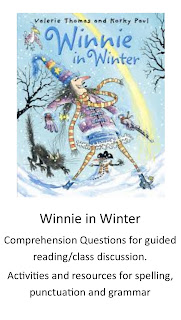It is the story of a young journalist, set in Venice in approximately the year 2000. She has been sent to interview the world renowned violinist Paolo Levi with strict instructions not to ask 'the Mozart Question'. During her visit, we learn not only of Paolo's life but that of his parents who were prisoners in Auschwitz during the Second World War. Secrets which have been kept for almost 50 years are revealed as Paolo recalls being told that all secrets are lies, and now 'the time has come...not to lie anymore'.
The book would make an excellent class read for any year 5 or year 6 class who are studying World War II or as part of a class collection of books linked to the topic such as A Candle in the Dark, Goodnight Mr. Tom, When Hitler Stole Pink Rabbit and Carrie's War. Taken as a group these stories each provide a slightly different perspective on World War II. This allows children to vicariously experience the war through different eyes.
The story ends up being 3 stories in one, a little like a set of Russian dolls. We begin with Lesley's story: the young journalist who is given the assignment of interviewing Paolo. Next we hear Paolo's story as told to Lesley and finally the story of Paolo's parents as told to Paola. This makes the structure of the story an interesting one to examine as it involves two specific time slips as the different stories are told. We are never throughout the story told what the actual 'Mozart Question' is, although we can infer what it might have been by the end of the book.
Despite its short length, this book may still prove to be a challenging read for some pupils in year 5 and 6 due to the vocabulary that is used such as machinations, incongruous, obsequiousness, reticent and tutelage. This though, makes it ideal for developing pupils vocabulary, particularly during small group discussion such as guided reading.
The book is set in three different places: London ,briefly at the beginning, Venice and Auschwitz. The latter two settings contrast starkly and these are depicted beautifully in Michael Foreman's illustrations. Pupils could use these detailed images as stimuli for descriptive writing.
The book does not contain Lesley's newspaper article and this would make an interesting follow-up piece of writing for the children. Lesley has been given a great deal of detail in her interview with Paola and pupils will need to decide what to keep and what to discard. This would necessitate a careful examination of the difference between newspaper reports and biography/narrative.
At the end of the book Michael Morpurgo includes an Author's Note. This provides a brief factual summary about how some Jewish prisoners were selected to play music in the concentration camps and a short paragraph about his stimulus for the story.
Publisher: Walker Books
Publication Date: 2015 (this edition)
ISBN: 978-1406366396







